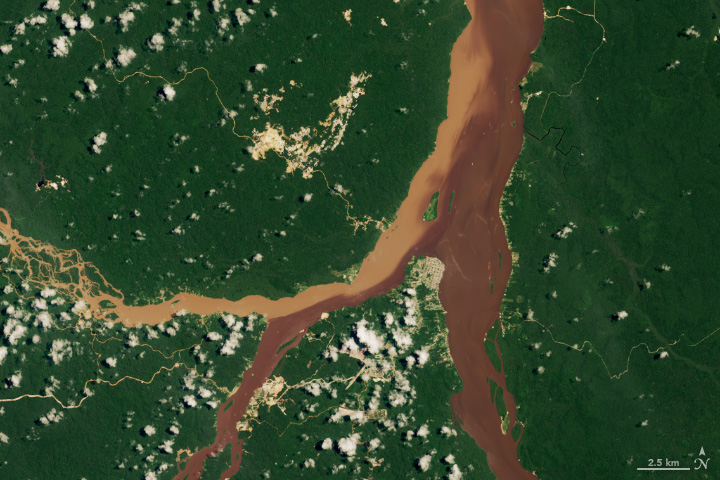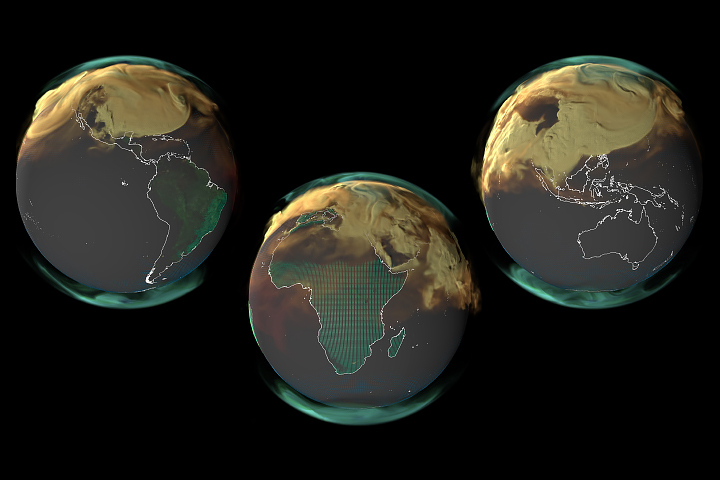- Home
- Missions
- Data
- Communications
- People
- The Earth Observer Newsletter




Recent Imagery
You will be directed to the NASA Visible Earth webpage when you select Images by Mission below, or click on the images at right that are randomly generated to represent four out of all possible topics.
You are here
The Global Change Observation Mission-Water (GCOM-W1)
Status:
Extended Mission
Mission Category:
A-Train
Launch Date: May 18, 2012
Japan Aerospace Exploration Agency (JAXA) mission (No NASA contribution)
The “Global Change Observation Mission” (GCOM) aims to construct, use, and verify systems that enable continuous global-scale observations (for 10 to 15 years) of effective geophysical parameters for elucidating global climate change and water circulation mechanisms.
Water circulation changes will be observed by a microwave radiometer onboard the GCOM-W (Water) satellite (scheduled to be launched in Japan Fiscal Year 2012). The GCOM-W will observe precipitation, vapor amounts, wind velocity above the ocean, sea water temperatures, water levels on land areas and snow depths.
Key The Global Change Observation Mission-Water Facts
| Altitude:Distance from sea level. | 700km |
|---|---|
| Inclination: | 98° |
| Origination: | JAXA |
| Instruments: |
AMSR2 (Advanced Microwave Scanning Radiometer 2) |
Relevant Science Focus Areas:
- Atmospheric Composition
- Climate Variability and Change
- Water and Energy Cycle
- Weather
Relevant Science Questions:
- How does the Earth system respond to natural and human-induced changes?
- How is the global Earth system changing?
- How will the Earth system change in the future?
Science Goals:
- Enhanced understanding of water in the Earth's climate system and the global water cycle.
- Enhanced understanding of additional components of the Earth's climate system and their interactions.
- Improved weather forecasting.
Related Applications:
- Agricultural Efficiency
- Coastal Management
- Disaster Management
- Homeland Security
- Water Management
- Weather Prediction

